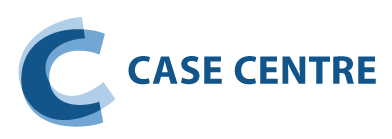


- Not connected
- |
- Login

Cocréation en question(s), la Métamorphose de l’Insectarium de Montréal (A et B) (La)
Co-creation in Question(s): The Metamorphosis of the Montreal Insectarium (A and B)

- French,
- English
- Innovation,
- Processus de cocréation,
- Muséum,
- Transformation organisationnelle,
- Musée
- Innovation,
- Co-creation process,
- Natural history museum,
- Organizational transformation,
- Museum
En 2010, Anne Charpentier, la directrice de l’Insectarium de Montréal – un musée d’histoire naturelle consacré aux insectes – reçoit le mandat de réaliser une grande métamorphose de son musée maintenant à l’étroit dans des bâtiments vétustes.
Au-delà d’une histoire de rénovation, l’intérêt du cas tient à la voie hors de l’ordinaire empruntée par Anne Charpentier pour gérer le projet. Entourée d’experts, elle définit un processus de cocréation qui aura pour extrant le contenu du cahier des charges du concours d’architecture devant déterminer le projet architectural et fonctionnel du futur musée. Contre vents et marées, elle entame un processus d’exploration de deux ans qui mobilise les employés de l’Insectarium, ceux des autres musées de Montréal, des experts mondiaux (en entomologie et en design expérientiel), ainsi que de simples citoyens. Le cas présente les détails de la démarche adoptée, mais aussi les réflexions de la directrice et de ses collaborateurs au long de cette approche de conception collective. Celle-ci a permis de formuler un programme d’expériences muséales, pièce maitresse du cahier des charges remis aux architectes. Le cas expose aussi les défis qu’ont relevés Anne Charpentier et son équipe.
Le cas s’articule en deux parties, la première centrée sur le contexte de la transformation du musée et la deuxième sur la définition et la mise en œuvre du processus de cocréation adopté.
In 2010, Anne Charpentier, director of the Montreal Insectarium, a natural history museum dedicated to insects, was mandated to metamorphose her museum, whose dilapidated facilities were bursting at the seams.
Much more than the story of a simple renovation project, this case focuses on the extraordinary project management approach adopted by Charpentier. Soliciting the input of a host of experts, she spearheaded a co-creation process to help develop the specifications for the architecture competition that would determine the architectural and functional design of the new museum. Against all odds, Charpentier launched a two-year process involving the museum staff, other Montreal museums, world-renowned experts (in entomology and experiential design), as well as the general public. This case presents the details of the approach used along with the thoughts of the director and her collaborators throughout the collective design process. The end result was a program of museum experiences – the centrepiece of the specifications presented to the architects.
The case also discusses the challenges faced by Charpentier and her team. The case is divided into two parts (A and B) – the first centres on the context of the museum transformation and the second on the development and implementation of the co-creation process.
- Culture
- Innovation
- Processus de cocréation
- Transformation organisationnelle
- Innovation
- Co-Creation process
- Organizational transformation
L’objectif principal de ce cas est de démystifier la notion de « processus de cocréation » – notion souvent véhiculée par des termes comme codesign, cocréation, customer-driven innovation. Le second objectif est d’ouvrir la boite noire des outils et dispositifs organisationnels qui permettent de faire émerger des idées nouvelles et de fédérer un collectif d’acteurs, à l’interne comme à l’externe de l’organisation. Le cas propose donc d’examiner les outils mis en œuvre par les protagonistes, et ce, afin de susciter chez les étudiants une réflexion sur les implications managériales de ce type d’action collective.
Sur un plan didactique, ce cas permet aux étudiants de :
- comprendre les enjeux contemporains de l’innovation collaborative, notamment dans un contexte de transformation organisationnelle;
- saisir les modalités de mise en œuvre d’un processus de cocréation dans un contexte multiacteurs;
- recenser les effets directs et indirects des dispositifs de cocréation sur l’organisation dans son ensemble.
The primary objective of this case is to explain the concept of co-creation – also known as co-design and customer-driven innovation. The secondary objective is to crack open the black box of organizational tools and mechanisms used to generate new ideas and assemble a group of internal and external players. The case thus examines the tools used by the protagonists to help students understand the managerial implications of this type of collective action.
The case helps students do the following:
- understand the challenges of collaborative innovation, particularly in the context of organizational transformation;
- understand how a co-creation process can be implemented in a multi-stakeholder context;
- identify the direct and indirect effects of the co-creation process on the organization as a whole
Innovation collaborative; cocréation dans un contexte multiacteurs
Collaborative innovation; Co-creation in a multi-stakeholder context


